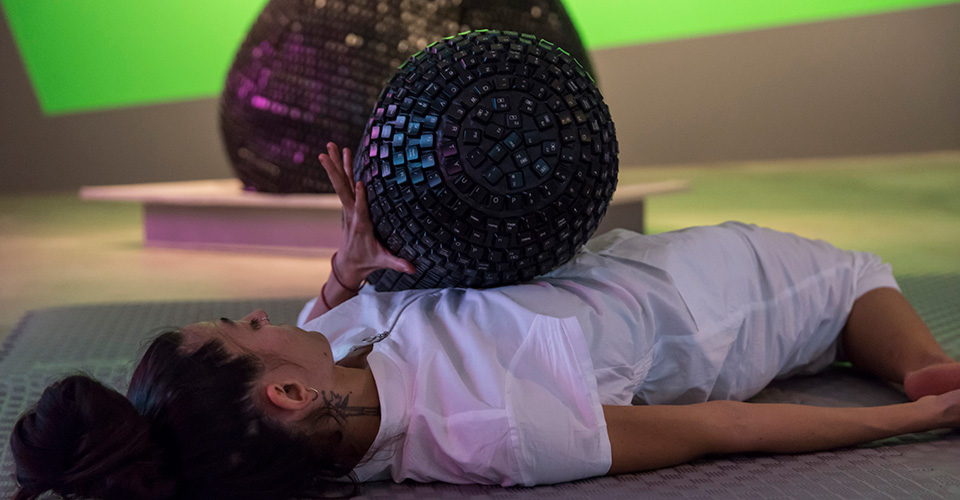
Data’s Entry by Katherine Behar
I was really struck by Katherine Behar’s Data’s Entry performance. I liked how she rendered the concept of the burden of optimization as a physical weight, an awkward object which resists the human dancer. In her talk, she spoke about how she was inspired by Butoh and the Judson Church in using exhaustion, labor, and slow movement to counter the weightless virtuosity of classical dance. I’m a performer who uses movement, but I’ve never been trained as a dancer. Rather, I highlight my flailing and sudden movements for an immediate, confrontational effect. I will look further into this history for inspiration.
I must have had Data’s Entry in the back of my head when I wrote my proposal for my final project in my Machine Learning module. I’d like to perform the process of machine learning. To do this, I’ll train the model in real time during the performance. The graphic will first respond with a one-to-one relationship to my gestures, but it will later develop emergent, dynamic behavior from machine learning. I’ll struggle against it and ultimately lose control of it. For an ambitious goal, I’d like to have motors instead of a projection, to make the power of machine learning have physical effects on my body. The graphic entity will symbolize artificial intelligence and its relationship with the human.
In our culture, we’ve been surrounded with alarmist narratives about artificial intelligence. It will take our jobs, it will make us humans useless. Even in the terminology “machine learning,” we afford machines a human-like agency to learn. I’m excited about machine learning because of the emergent behaviors it can generate. I can tie this to Ian Bogost’s concept of alien phenomenology, where the majority of computation happens without humans in a “secret universe,” and things don’t need the perception of humans to exist.
Finally, we talked about the ideas of the user versus the programmer, both as part of an assemblage of affective bodies with equal agency. This relates closely to my research project, back to theories of interactive artworks and games. The artist or programmer may set up an environment, but the users make the interactions. The system itself also has a kind of agency in circumscribing the actions that users can take.